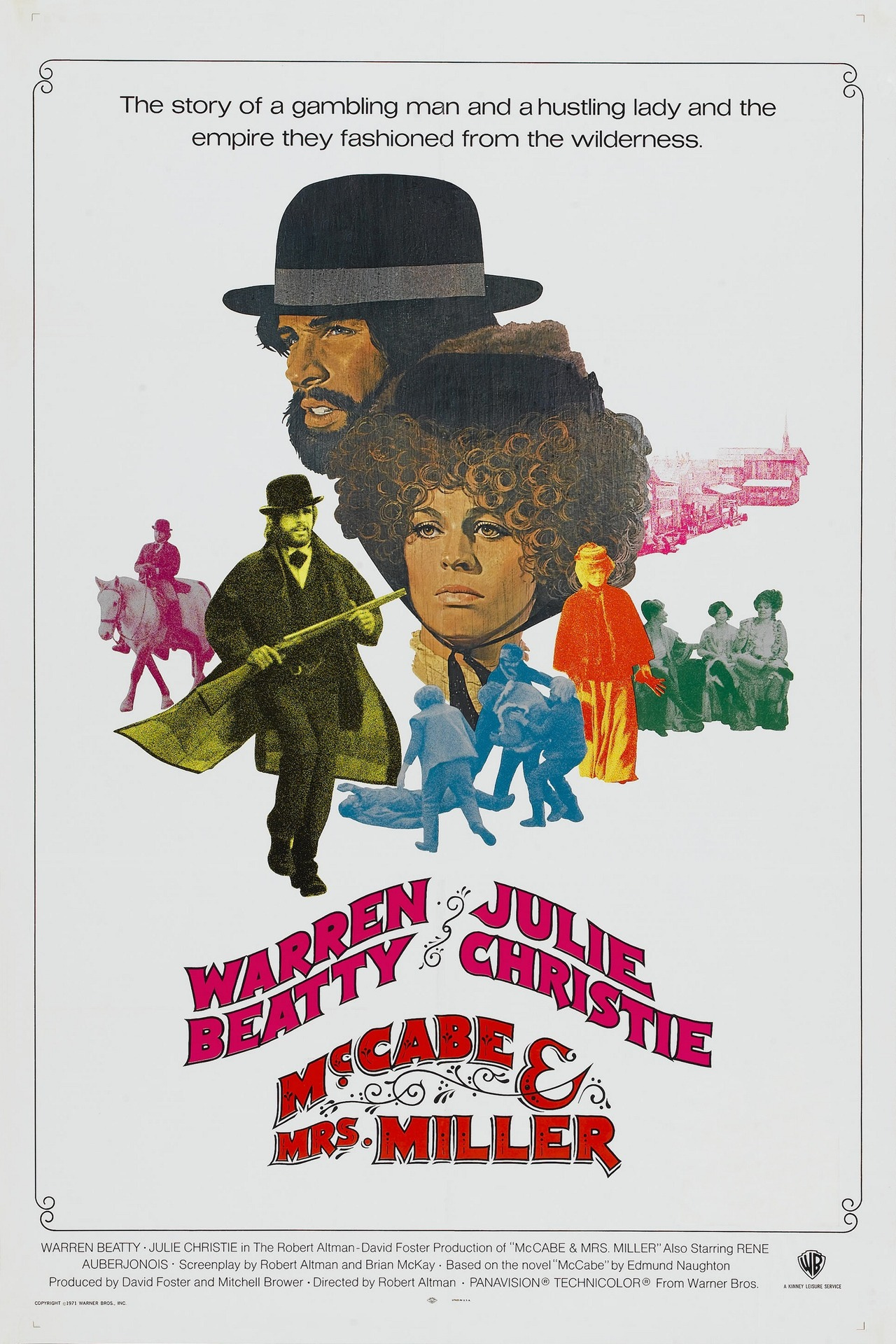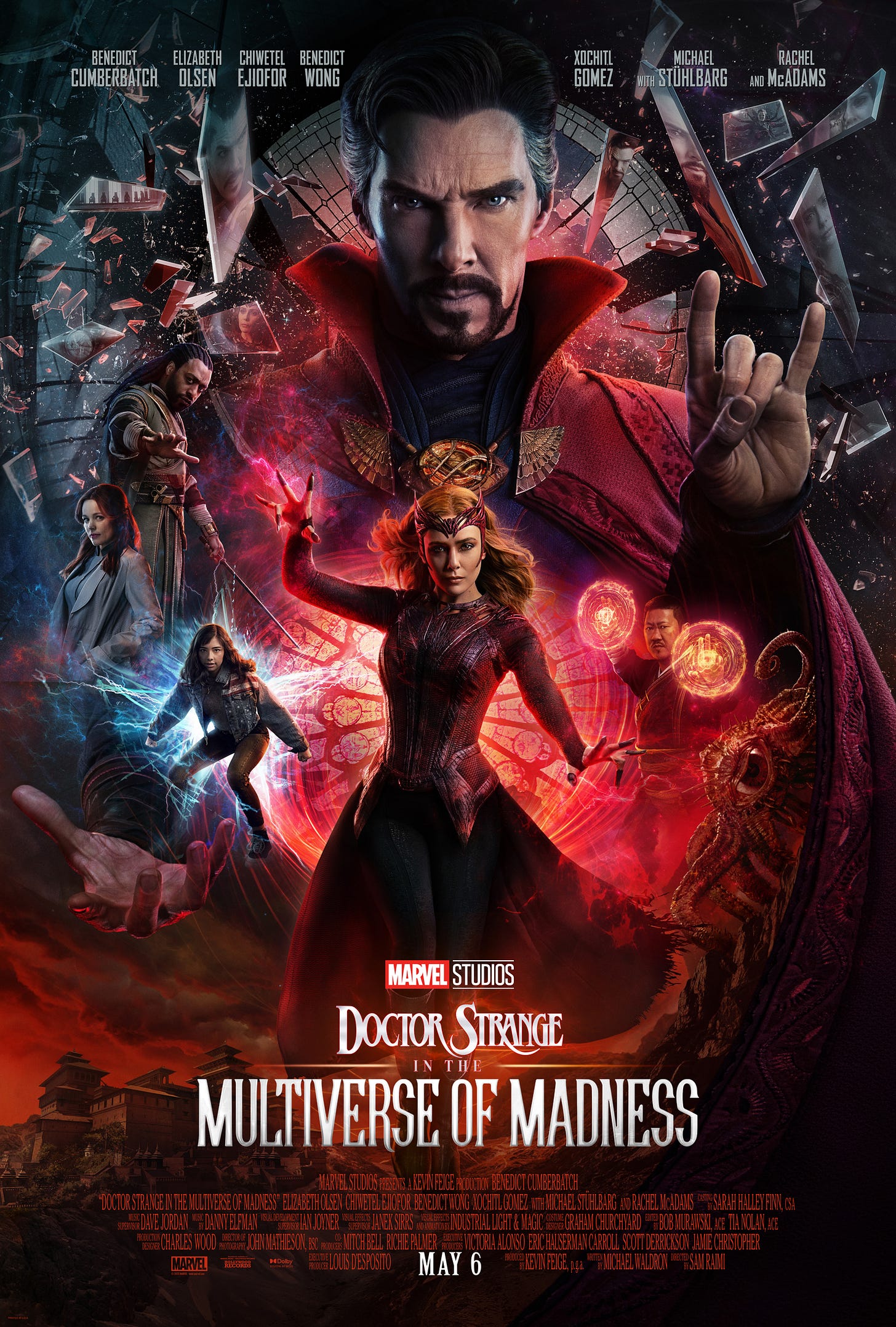Welcome back!
I hope you enjoyed my rankings of Paul Thomas Anderson last week. If you didn’t read that, well then allow me to direct you right to it. Click for part one here, and part two here.
This week’s post should be interesting as I will be writing about a Marvel movie for the first time. I probably will write about my feelings about the MCU in the coming months. For now, you’re stuck with just a review.
Oh yeah, one other thing. In my last post, I forgot to mention that Alex Garland’s new film, Men, DEFINITELY belongs in the “What the fuck did I just watch” category. The ending certainly cemented that.
Here are the three films I saw over the last week:
Black Narcissus (1947)
Director: Michael Powell and Emeric Pressburger
A-
A landmark in British cinema, I can’t even imagine watching this film in theaters when it came out. Think about it this way, it is an erotic thriller involving nuns. I imagine some people back then probably saw Black Narcissus as the most scandalous and shocking thing on the silver screen.
Sister Clodagh (Deborah Kerr) and her mission of English nuns are pushed to their absolute mental limits in the Himalayas. Far away from their homeland, all of the nuns start to break down in their respective ways. For example, the gardening nun Sister Philippa (Flora Robson) starts to lose herself in the environment, feeling very uncomfortable in the mountain terrain. While there are certainly some dated elements of the locals, the film’s discomfort of being in a new space feels quite relatable.
The sources of discontent mainly revolve around the one white guy in their company, Mr. Dean (David Farrar). Clodagh, even though she has no intention of falling for Dean, has visions of her past life where she ended up in a failed relationship, bringing her much mental anguish.
But Sister Ruth’s emotional breakdown is by far the most compelling element of the story. Her storyline definitely gives an erotic label to the film. The presence of Dean makes her question her faith as she feels love, something that is forbidden for nuns. Her jealousy and rage convince her that Clodagh is evil and is in love with Dean. Her renouncement of the Anglican faith offers interesting narrative questions in the final act.
The coloring of the film backs the story, themes and tone excellently. If anyone has picked up, I am a sucker for incredible color in cinema. Michael Powell and Emeric Pressburger (known as The Archers) brilliantly use the relatively young Technicolor to make Black Narcissus look pristine. There are beautiful backgrounds. The colors of the costumes really add to the theme, too.
The holy white nun costumes are perfectly contrasted by Ruth’s red dress after she renounces the mission. It’s a great motif for the battle between faith and eroticism. What really shocks me, though, is the lack of color in her crazed eyes after she sees Clodagh and Dean together. With a sickly white, you can feel Ruth’s rage. The film is full of examples like these, making it one of the more interesting films of the 1940s.
McCabe and Mrs. Miller (1971)
Director: Robert Altman
B
I’m struggling to find a way to start the review. But that’s generally what director Robert Altman did in his films. I feel like every movie he made would just go against genre norms and Hollywood norms. This was certainly no different and I enjoyed it.
While it may seem like a gritty Western about a gambler (Warren Beatty) and a prostitute (Constance Miller) building a town, it ignores and flips the conventions of the genre.
First off, the gambler, John McCabe, is a mysterious tough guy who rides into town on a horse. While these heroes are typically tough guys, Altman uses the mystery of McCabe to his advantage. The so-called hard-boiled reputation that precedes McCabe might be entirely fabricated. There were claims that he killed some men, but there was no proof of this, with McCabe even denying this. It adds to the mythology a man can build up in the American West, but it can be all based on bullshit.
Secondly, the setting is in the woods in Washington state, hardly your standard Western location. The mud, snow and lush green of the trees give off a wildly different feel.
But most importantly, you can barely hear what any of the characters are saying. Characters' voices are edited on top of each other, so you hear every character talk, usually at the same time. It can feel very distracting at times, especially in the bar scenes where you can hear all the conversations. It makes hearing McCabe speak feel impossible. Altman explained there were some challenges in post production, particularly in the editing. In my humble opinion, it would be sick if Criterion found some remastered version of this film. It would make it much more digestible.
While this made the film a challenge to dissect, I still appreciate that it subverts typical editing conventions. It, along with the 2.40:1 aspect ratio, adds realism and makes the story and characters feel crammed. These people have reached the end of the frontier, fitting as the film takes place in the early 20th century, far past the frontier era of America. Look, I highly doubt Altman was making a statement about American expansionism in the aspect ratio. It’s definitely one of the themes of the film, and I just found a cool parallel. Sue me.
Also the film just taught me the phrase, “If a frog had wings, he wouldn't bump his ass.” I love that.
Doctor Strange in the Multiverse of Madness (2022)
Director: Sam Raimi
C+
As I stated at the top of the post, I will eventually write about Marvel movies. They’re the only reason most people will show up to movie theaters at this point and I’m a comic book nerd so they are important to me.
For now, all that I’ll say is that most of the Marvel movies from the last five years follow the formula (something I will try to describe eventually). They’re OK movies, but they all feel the same. I’m mainly talking about Ant-Man and the Wasp, Captain Marvel, Spider-Man: Far From Home, Black Widow and Shang-Chi and the Legend of the Ten Rings (not Eternals, that was just terrible). They don’t really add much in terms of style and cinematic language.
Doctor Strange in the Multiverse of Madness changes that at least a little bit. In 2021, there was talk of Marvel’s latest release being super scary. It should be stated that it is scary relative to the MCU. Still, the character of Doctor Strange and the multiverse concept should open the door for crazy and sometimes scary shit.
The first Doctor Strange film was directed by Scott Derrickson, who made Sinister, which still creeps me out to this day. But he dropped out of the sequel and who better to direct a crazy, funny/scary film than Sam friggin Raimi?!!?
His style and references to prior films stand out instantly. It feels like his 2000s Spider-Man films got mushed together with Evil Dead and Drag Me To Hell. But instead of Spider-Man, it’s Doctor Strange (Benedict Cumberbatch). The evil spirits act like the taunting spirits Ash Williams faced off against. Hell, Bruce Campbell even makes a cameo and makes fun of us for waiting for a post-credit scene. While Supreme Marvel Dictator Kevin Feige will enforce the Marvel standard, the film strikes a good balance between each of the styles.
The cinematography and editing create a heightened sense of discomfort and thrills. The zooms feel intentional and heavy-hitting. The uncanny visions and illusions are some of the best effects you’ll see in theaters today and are straight up freaky. I also respect the pace of the film as we know pretty quickly the stakes and the antagonist. Raimi liked to get to the point with his Spider-Man films, and it’s no different here.
It is something you will get with a great director like Raimi, not with some of the no-names who direct other MCU movies.
The biggest reason that the film can be considered horror1 is through Wanda Maximoff (Elizabeth Olsen) Scarlet Witch. Her powers get hyped up early on, she only shoots CGI beams out of her hands. But when she harnesses the power of the Darkhold, a magical but spooooky book, is when fear sets in. She takes hold of another universe’s Wanda in a scene reminiscent of the monster from Evil Dead. And when she destroyed some weird council of superheroes made up of Fantastic Four’s Jim Halpert and Professor X (Patrick Stewart), some of the deaths are pretty gruesome.
Her storyline that was crafted the most recent Avengers movie and WandaVision builds in this film. She doesn’t want to rule the world. She just wants her kids. Wanda also cleverly points out some of the hypocrisies in the MCU’s prior films, which I didn’t expect at all from Marvel. So you know what, props to Raimi and Supreme Marvel Dictator Kevin Feige (yeah I’ll keep calling him that).
I don’t consider this nowhere no near a horror film despite some of the mild jumpscares.









I’ll be reading all of your MCU movie reviews so keep those up… but 3.5/5?! Maybe a little harsh but I respect the criticism